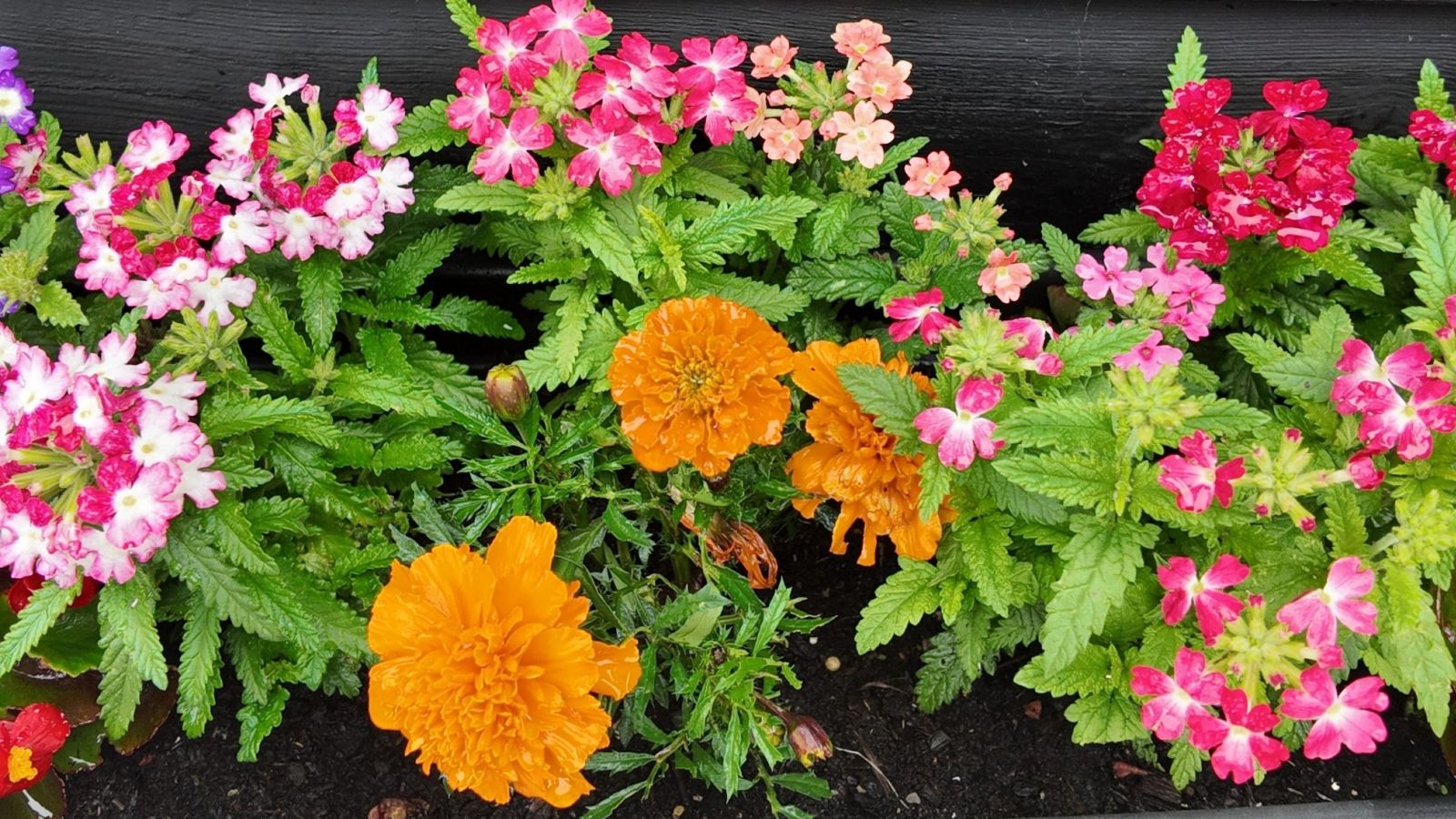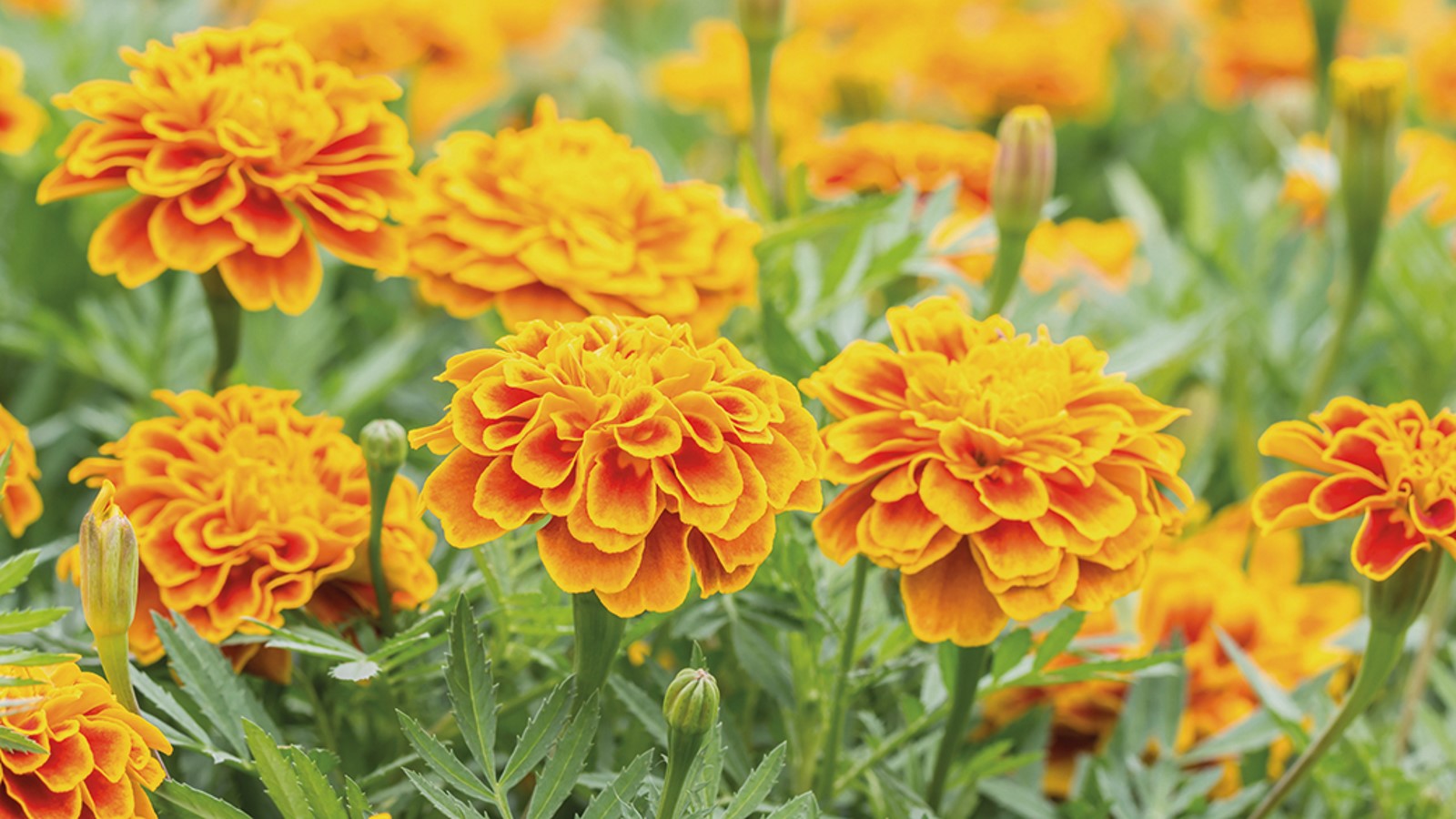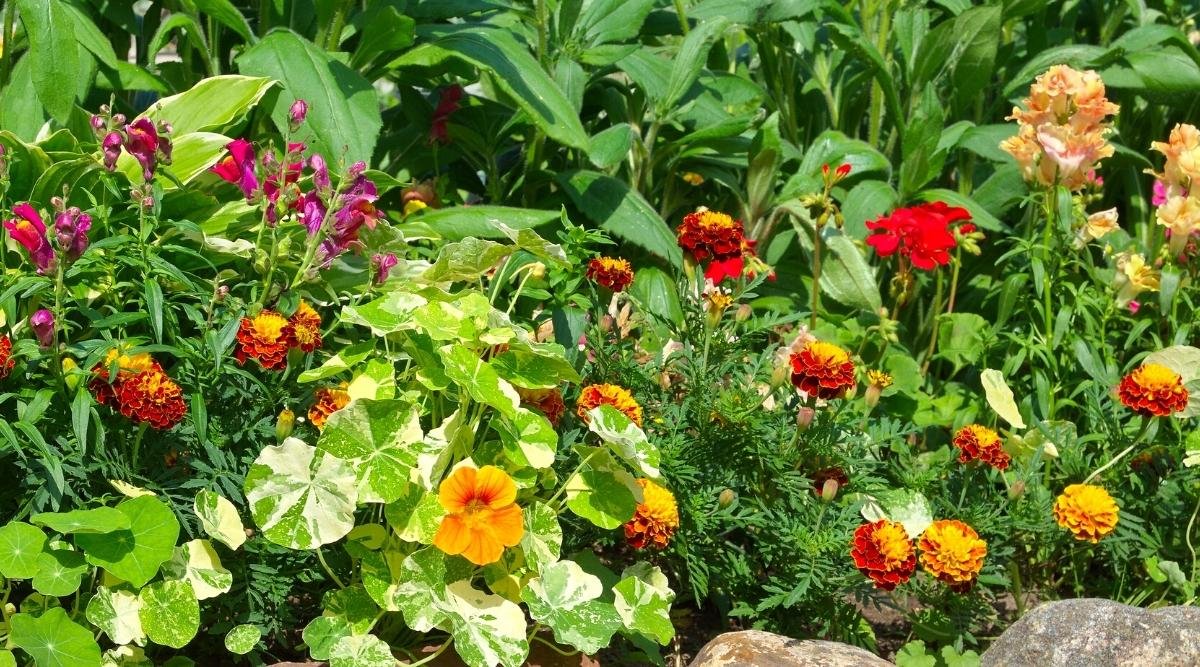Marigold Companion Plants: 27 Different Plants to Grow With Marigolds

The Ultimate Guide to Building a Healthier, Pest-Resistant Garden Naturally
Marigolds are not just beautiful additions to your flower beds—they’re also powerhouse companion plants that help protect your garden and improve its overall health. From vegetables to herbs and flowers, marigolds get along well with a wide variety of plants.
In this in-depth guide, you’ll learn exactly which plants pair best with marigolds, why they make such effective companions, and how to use marigolds to naturally repel pests, attract pollinators, and boost yields. Whether you’re a seasoned gardener or just starting out, this guide will help you make the most of marigolds in your garden.
Why Use Marigolds as Companion Plants?
1. Natural Pest Control
Marigolds, especially French marigolds (Tagetes patula), release compounds like thiophenes that repel harmful pests such as:
- Nematodes (microscopic worms that attack roots)
- Aphids
- Whiteflies
- Cabbage worms
- Tomato hornworms
- Mexican bean beetles
2. Pollinator Attraction
Their bright blooms attract bees, butterflies, and other pollinators that are essential for healthy fruit and vegetable production.
3. Trap Cropping
Marigolds can act as “trap crops” by attracting pests away from more vulnerable plants like tomatoes or beans.
4. Soil Health
Certain marigold varieties release bioactive chemicals that can suppress root-knot nematodes, cleanse the soil, and break disease cycles.
27 Plants That Grow Well With Marigolds
Here’s a categorized breakdown of the top companion plants that thrive alongside marigolds:
🌿 Vegetables That Benefit from Marigolds

1. Tomatoes
Marigolds deter tomato hornworms and whiteflies, two of the most destructive tomato pests. Plant them around tomato beds for natural protection.
2. Peppers
Marigolds protect peppers from aphids, thrips, and nematodes. They also attract beneficial insects that help with pollination and pest control.
3. Cucumbers
Cucumbers benefit from marigolds’ pest-deterrent properties, especially against cucumber beetles.
4. Squash & Zucchini
Marigolds help repel squash bugs and discourage aphid infestations, common in these crops.
5. Eggplant
Eggplants often fall victim to flea beetles—marigolds planted nearby help deter them effectively.
6. Beans
Marigolds repel Mexican bean beetles, which chew on bean leaves. Interplanting helps preserve bean foliage and yield.
7. Carrots
Marigolds mask the scent of carrots, making it harder for carrot flies to locate them.
8. Lettuce
Marigolds help deter aphids and slugs from feeding on tender lettuce leaves.
9. Corn
Planting marigolds around corn attracts beneficial insects like ladybugs and lacewings, which feed on pests like aphids and mites.
10. Cabbage
Marigolds help repel cabbage moths and cabbage worms, two notorious brassica pests.
11. Broccoli & Cauliflower
Similar to cabbage, marigolds offer protection from caterpillars and aphids.
12. Potatoes
Marigolds can help deter Colorado potato beetles and reduce nematode problems in potato beds.
🌱 Herbs That Thrive With Marigolds
13. Basil
Both basil and marigolds repel aphids, mosquitoes, and whiteflies. Together, they create a protective barrier for surrounding plants.
14. Oregano
Oregano attracts beneficial insects like parasitic wasps, while marigolds repel pests—making them a strong pair for integrated pest management.
15. Rosemary

This woody herb benefits from the insect-repelling power of marigolds and helps deter flies and beetles as well.
16. Mint
Mint can be invasive, but planted in containers near marigolds, it helps confuse pests with its strong scent.
17. Thyme
A low-growing herb that works well as a ground cover beneath marigolds, thyme also repels cabbage worms.
🌸 Flowers and Ornamentals That Pair Well With Marigolds
18. Nasturtiums
Nasturtiums act as a trap crop for aphids and squash bugs. Paired with marigolds, they provide double protection.
19. Zinnias
Zinnias attract pollinators and beneficial insects while complementing marigolds in color and form.
20. Calendula
Sometimes confused with marigolds, calendula helps repel aphids and is a fantastic companion flower in veggie beds.
21. Sunflowers
Sunflowers draw in pollinators and create natural shade for heat-sensitive marigolds, forming a beautiful, functional duo.
22. Cosmos
Cosmos bring in bees and hoverflies. Planted near marigolds, they form an attractive, pest-friendly border.
23. Petunias
Petunias help deter aphids, asparagus beetles, and leafhoppers. They also add color and texture next to marigolds.
🍓 Fruits That Benefit From Marigold Companionship
24. Strawberries
Marigolds help repel pests that attack strawberries, like slugs and nematodes, and boost pollinator activity.
25. Melons (Cantaloupe, Watermelon)
Marigolds planted nearby help deter beetles and leafhoppers from damaging melon vines.
26. Grapes
Marigolds around grapevines attract predatory insects like parasitic wasps that help control mealybugs and aphids.
27. Blueberries
While not commonly paired, marigolds planted nearby can improve biodiversity and reduce pest pressure in fruiting areas.
Plants You Should NOT Grow With Marigolds

While marigolds are excellent companions to many plants, there are a few they may not do well with:
- Beans (certain varieties) – Some gardeners report reduced bean growth when too close to marigolds. Test on a small scale first.
- Brassicas (in some cases) – While marigolds repel cabbage moths, they can sometimes compete for nutrients. Space them carefully.
- Fennel – Fennel is generally not a good companion for any plant, including marigolds.
Advanced Companion Planting Tips with Marigolds
Use French Marigolds for Maximum Pest Control
French marigolds (Tagetes patula) are the most effective at repelling nematodes and harmful insects. They also have a compact growth habit, making them ideal for interplanting.
Rotate Marigolds Annually
If you use marigolds as a nematode control method, plant them in different beds each year to break pest cycles more effectively.
Don’t Overcrowd
Marigolds can be bushy. If planted too close to vegetables or herbs, they can outcompete for sunlight or airflow. Maintain proper spacing—generally 8-12 inches for French marigolds.
Deadhead for Longer Blooming
Remove spent flowers regularly to encourage continual blooming and keep beneficial insects returning to your garden.
Consider Marigold Varieties
- French Marigolds – Best for pest control
- African Marigolds – Taller, great for cut flowers but less pest-repelling
- Signet Marigolds – Smaller, edible, fragrant flowers with light pest-repelling traits
Table of Contents
FAQs About Marigold Companion Planting
Do marigolds really help with pest control?
Yes. Marigolds produce chemicals like thiophenes that repel many soil-borne and airborne pests, including nematodes, aphids, and beetles.
What marigold variety is best for companion planting?
French marigolds (Tagetes patula) are considered the best variety due to their strong pest-repelling properties and compact size.
How close should I plant marigolds to other crops?
Plant marigolds 8–12 inches away from your vegetables, herbs, or flowers. Close enough to protect but far enough to avoid crowding.
Can I grow marigolds in containers with other plants?
Absolutely! Just ensure the container is large enough and that plants with similar water and sun requirements are grouped together.
Do marigolds improve soil health?
Yes. Some marigolds release compounds that suppress root-knot nematodes and help clean the soil of lingering pathogens.
Are marigolds good for pollinators?
Yes. Marigolds attract bees, butterflies, and other pollinators, especially single-flowered varieties which provide easier nectar access.
Should I plant marigolds all around my garden?
Yes! Consider using them as borders, between rows, or even in pots to scatter around different garden zones for widespread protection.
Will marigolds keep deer or rabbits away?
Marigolds have a strong scent that may deter rabbits and deer, but they are not a guaranteed repellent. Use them as part of a broader strategy.
Can marigolds grow in partial shade?
They prefer full sun (6–8 hours/day), but they can tolerate light shade. However, bloom production may decrease in lower light.
How long do marigolds bloom?
Marigolds bloom from late spring until the first frost. Deadheading regularly helps extend the flowering season.
Can marigolds be grown from seed?
Yes. Marigolds are easy to grow from seed and can be direct sown after frost or started indoors 4–6 weeks before the last frost.
Do marigolds attract pests too?

While marigolds repel many pests, they can sometimes attract spider mites if stressed or overcrowded. Keep plants healthy and spaced well.
🌼 Conclusion
Marigolds are far more than decorative garden fillers—they’re hardworking companions that actively protect and enhance the health of your garden. With their pest-repelling properties, ability to attract beneficial insects, and contribution to soil health, marigolds bring both beauty and function to any planting space.
By pairing marigolds with the 27 compatible vegetables, herbs, fruits, and flowers outlined in this guide, you’re not only creating a colorful and eye-catching garden—you’re also building a more resilient, biodiverse, and productive environment.
Whether you’re designing a small raised bed or planning an expansive garden layout, marigolds deserve a spot in your growing strategy. Plant smart, care naturally, and let marigolds work their magic alongside your favorite crops.
If you’d like, I can also create a printable companion planting chart or a month-by-month marigold care calendar to help you plan your garden even more efficiently. Just say the word!

